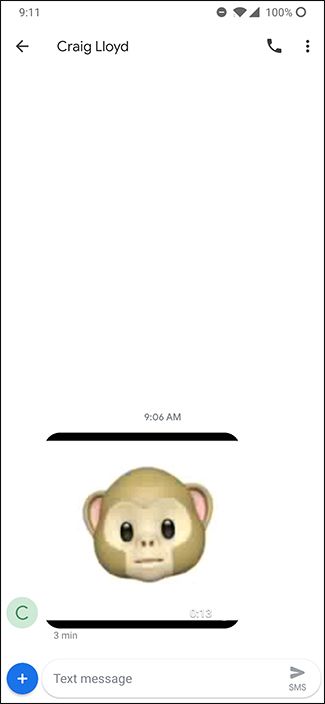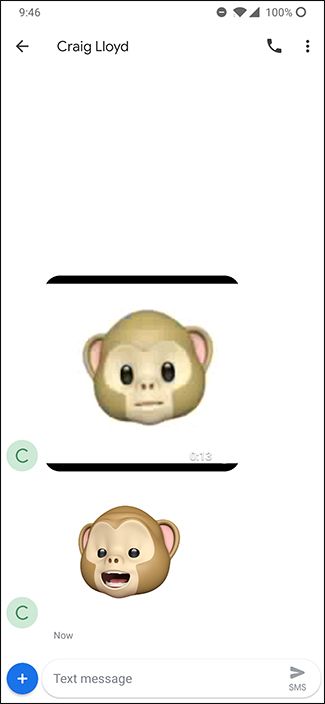Animoji is a really fun feature in iMessage on newer iPhones, but you can also send Animoji to friends and family that don't have iMessage---or don't even have an iPhone for that matter.
When you send an Animoji to another iPhone user, it's optimized to show up as an animated GIF of sorts, complete with audio. However, it's really nothing more than a video, so you can send Animoji to anyone, whether they use an iPhone or an Android device.
Even better, there's nothing different that you have to do on your end to send an Animoji to someone who doesn't use iMessage or have an iPhone. The only difference you'll notice is that text messages show green instead of blue.
So what does it look like on their end? Android users who receive an Animoji will get it as a typical video through their text messaging app.
The user can then tap on it to expand the video to full the screen and play it.
However, as you may have noticed, the quality is severely degraded, and the Animoji appears rather blocky and pixelated---it's pretty clear that, while sending Animoji to Android users works, it's not ideal.
If you ever want to send an Animoji to a friend or family member who uses Android, I would highly recommend sending it as a still image instead, rather than an animated GIF/video---the quality will be much better overall. To do this, instead of hitting the record button when creating an Animoji, tap on the Animoji character to create a still image, and then send it. The image will look way better than the video.
Of course, at that point, it's not an Animoji, but rather a normal emoji that's bigger and more detailed. So, Animoji isn't limited to only iPhone users, but the experience on anything other than an iOS device leaves much to be desired.




